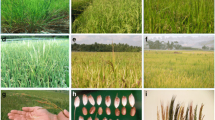Abstract
Since the early 1990s when the first commercialization of living modified organism (LMO), LMO has been developed to improve nutrient quality and productivity of crops. As the self-sufficiency rate of soybean has gradually decreased in South Korea, most of soybeans have been imported. The cultivation and trade of LM crops are regulated in many countries and authorizations for the use are mandatory in most. In South Korea, the cultivation of LM crop is not allowed and unintentional release of LMO into the natural environment is prohibited. In this study, we developed a novel multiplex PCR method for four LM soybean events (CV127, MON87705, FG72 and MON87701) which were approved recently in South Korea. Multiplex PCR primers were designed for PCR amplification of four LMO event-specific fragments, and we analyzed 41 environmental monitoring samples to confirm the efficiency of this method. These results indicated that the multiplex PCR detection method is sufficient for four LM soybeans found in the natural environment. Based on our finding, we suggest that the new technique may be useful as a lead tool for the development of a detection method for various LMO/GMOs.






Similar content being viewed by others
References
ISAAA (2017) Global status of commercialized biotech/GM crops: 2017. ISAAA Brief No. 53. Accessed 06 Sept 2018
MAFRA (2017) The status of crop sufficiency rate. Ministry of Agriculture, Food and Rural Affairs, Sejong-Si (in Korean)
KBCH: Korea Biosafety Clearing House [Internet] (2017) Status of risk assessment of GMO in Korea. http://www.biosafety.or.kr. Accessed 01 Aug 2018
Kim JH, Kim YR, Kim HY (2011) Current status on the development of detection methods for genetically modified plants. J Plant Biotechnol 38:143–150
Seol MA, Lee JR, Choi W, Jo BH, Moon JC, Shin SY, Eum SJ, Kim IR, Song HR (2015) Establishment of detection methods for approved LMO in Korea. J Plant Biotechnol 42:196–203
Seol MA, Jo BH, Choi W, Shin SY, Eum SJ, Kim IR, Song HR, Lee JR (2017) Development of detection methods for six approved LM crops in Korea. J Plant Biotechnol 44:97–106
Jo BH, Lee JR, Choi W, Moon JC, Shin SY, Eum SJ, Seol MA, Kim IR, Song HR (2015) Development of multiplex PCR-based detection method for five approved LM canola events in Korea. J Plant Biotechonol 42:117–122
Jo BH, Seol MA, Shin SY, Kim IR, Choi W, Eum SJ, Song HR, Lee JR (2016) Multiplex PCR method for environmental monitoring of approved LM cotton events in Korea. J Plant Biotechnol 43:91–98
Shin SY, Lim HS, Seol MA, Jung YJ, Kim IR, Song HR, Lee JR, Choi W (2016) Four multiplex PCR sets of 11 LM maize for LMO environmental monitoring in Korea. J Plant Biotechnol 43:473–478
Mano J, Hatano S, Nagatomi Y, Futo S, Takabatake R, Kitta K (2018) Highly sensitive GMO detection using real-time PCR with a large amount of DNA template: single-laboratory validation. J AOAC Int 101:507–514
Fu W, Zhu P, Wei S, Zhixin D, Wang C, Wu X, Li F, Zhu S (2017) Multiplex enrichment quantitative PCR (ME-qPCR): a high-throughput, highly sensitive detection method for GMO detection. Anal Bioanal Chem 409:2655–2664
Köppel R, Bucher T, Frei A, Waiblinger HU (2015) Droplet digital PCR versus multiplex real-time PCR method for the detection and quantification of DNA from the four transgenic soy traits MON87769, MON87708, MON87705 and FG72, and lectin. Eur Food Res Technol 241:521–527
Rudi K, Rud I, Holck A (2003) A novel multiplex quantitative DNA array based PCR (MQDA-PCR) for quantification of transgenic maize in food and feed. Nucleic Acids Res 31(11):62
Fraiture M-A, Herman P, Loose MD, Debode F, Roosens NH (2017) How can we better detect unauthorized GMOs in food and feed chains? Trends Biotechnol 35(6):508–517
Kiddle G, Hardinge P, Buttigieg N, Gandelman O, Pereira C, McElgunn CJ, Rizzoli M, Jackson R, Appleton N, Moore C, Tisi LC, Murray JAH (2012) GMO detection using a bioluminescent real time reporter (BART) of loop mediated isothermal amplification (LAMP) suitable for field use. BMC Biotechnol 12:15
Heide BR, Heir E, Holck A (2008) Detection of eight GMO maize events by qualitative, multiplex PCR and fluorescence capillary gel electrophoresis. Eur Food Res Technol 227:527–535
Han X, Wang H, Chen H, Mei L, Wu S, Jia G, Cheng T, Zhu S, Lin X (2013) Development and primary application of a fluorescent liquid bead array for the simultaneous identification of multiple genetically modified maize. Biosens Bioelectron. https://doi.org/10.1016/j.bios.2013.05.045
Morisset D, Demšar T, Gruden K, Vojvoda J, Štebih D, Žel J (2009) Detection of genetically modified organisms-closing the gaps. Nat Biotechnol 27:700–701
Shrestha HK, Hwu KK, Chang MC (2010) Advances in detection of genetically engineered crops by multiplex polymerase chain reaction methods. Trends Food Sci Technol 21:442–454
Kim JH, Song HS, Heo MS, Lee WY, Lee SH, Park SH, Park HK, Kim MC, Kim HY (2006) Detection of eight different events of genetically modified maize by multiplex PCR method. Food Sci Biotechnol 15:148–151
Park SB, Kim HY, Kim JH (2015) Multiplex PCR system to track authorized and unauthorized genetically modified soybean events in food and feed. Food Control 54:47–52
Kim JH, Jeong D, Kim YR, Kwon YK, Rhee GS, Zhang D, Kim HY (2013) Development of a multiplex PCR method for testing six GM soybean events. Food Control 31:366–371
Grohmann L, Belter A, Speck B, Goerlich O, Guertler P, Angers-Loustau A, Patak A (2017) Screening for six genetically modified soybean lines by an event-specific multiplex PCR method: collaborative trial validation of a novel approach for GMO detection. J Consum Prot Food Saf 12:23–36
Acknowledgments
This study was supported by NIE-2015-05, NIE-A-2017-06 and NIE-D-2017-08. We thank Do-Hun Lee for linguistic assistance during the preparation of this manuscript.
Author information
Authors and Affiliations
Corresponding author
Electronic supplementary material
Below is the link to the electronic supplementary material.
Rights and permissions
About this article
Cite this article
Choi, W., Seol, MA., Jo, BH. et al. Development and application of a novel multiplex PCR method for four living modified soybeans. Appl Biol Chem 61, 635–641 (2018). https://doi.org/10.1007/s13765-018-0399-8
Received:
Accepted:
Published:
Issue Date:
DOI: https://doi.org/10.1007/s13765-018-0399-8




